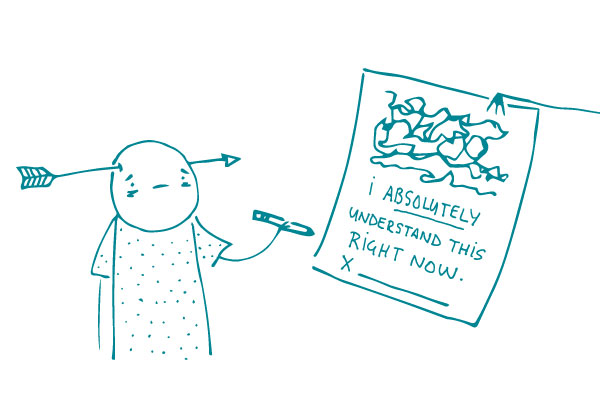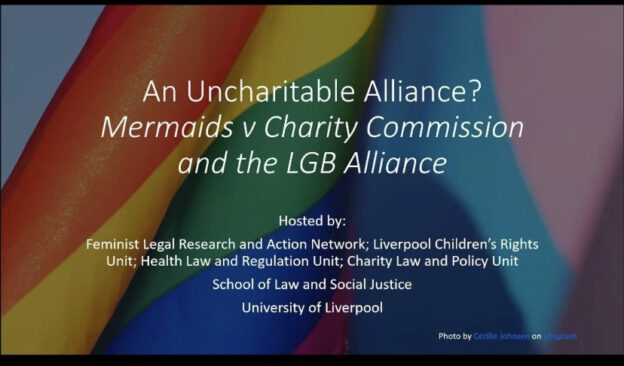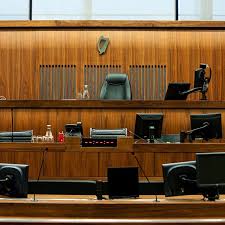As evidence of just how ubiquitous the issue of child medical transition has become, we had the benefit of two reported cases very shortly after the publication of the Cass Review final report in April 2024. These were Re J (Transgender: Puberty Blocker and Hormone Replacement Therapy) [2024] EWHC 922 (Fam) and O v P and Q [2024] EWHC 1077 (Fam) where I represented the applicant mother.
I will consider each case in turn and then offer some thoughts on how matters are likely to develop.
The Facts
The facts of each case were broadly similar – both involved a female child aged 16 at the time of the hearing, who wished to continue or begin taking testosterone as part of a ‘transition’ to being perceived as male. Both involved one parent who agreed with the treatment and one who resisted. Both cases were concerned with what should happen when a child over 16 wanted to get private treatment, recognising the impact of NHS waiting lists and serious concerns about private providers such as Gender GP.
The law applied to both cases was uncontroversial. Children who are under 16 can consent to medical treatment without their parents if they are assessed to be ‘Gillick competent’ and understand the nature of the treatment proposed and its risks and benefits – see Gillick v West Norfolk and Wisbech AHA [1986] AC 112. If a child isn’t Gillick competent then the parent provides consent.
Children who are over 16 benefit from a statutory presumption of capacity to consent as if an adult, pursuant to section 8 of the Family Law Reform Act 1969
The consent of a minor who has attained the age of sixteen years to any surgical, medical or dental treatment which, in the absence of consent, would constitute a trespass to his person, shall be as effective as it would be if he were of full age; and where a minor has by virtue of this section given an effective consent to any treatment it shall not be necessary to obtain any consent for it from his parent or guardian.
Two factors can operate to override that capacity. First, if s 2(1) of the Mental Capacity Act 2005 applies and the child is found to lack capacity to make a decision because of an impairment of or disturbance in functioning of the mind or brain.
Second, the court retains an ‘inherent jurisdiction’ to override the wishes of any child up until the age of 18, if to do so is in the child’s best interests and will prevent significant harm. As was noted by Judd J in O v P the cases where the courts have acted to override a child’s consent have involved a child refusing treatment which was considered life saving, such as blood transfusions. There is no reported case of a court intervening to stop a child having treatment that was offered by a doctor and wanted by the child.
It is a matter of significance to ask the court to put medical transition into a ‘special category’ of treatment which required continued court oversight. The courts have, rightly, to be very wary of ‘treading on the toes’ of either clinicians or Parliament and many previous authorities have given stern warnings about the court dealing only with decisions that were necessary, and not straying into broader ethical dilemmas or medical issues which were better left to MPs or clinicians. Neither court was willing to make decisions confirming that medical transition should be a ‘special category’ of treatment that required continued court oversight. But both contain some helpful – and alarming – commentary on the state of childhood medical transition.
The decision in re J
In January 2023 when only 15, J started taking testosterone to ‘transition’ from female to male. This stopped in August 2023 when the matter came to court, J’s father being very concerned at the implications of this treatment, which was provided by ‘Gender GP’. This outfit was, until the registration of Gender Plus in January 2024, the only private provider of hormones in the UK.
All parties then agreed that she could undergo a six month assessment with Gender Plus and the court therefore did not need to make any decisions on the substantive issues around capacity and consent, but would rather ‘take stock of the issues and evidence to date (para 4) and provide some guidance arising out of what had been learned during these proceedings. The court explicitly did NOT consider the Cass Review as it had not been available at the time of the court hearing in February 2024.
The position regarding J was complicated by her diagnoses of autism and anorexia, and detention under the Mental Health Act 1983 for 9 months in 2021. J was then ‘appraised’ by Gender GP over 2 months in October 2022 but this involved direct communication with only an unregistered counsellor (para 12). J’s father was so concerned he made application to the court in April 2023 to ask the court to examine the propriety of treatment that was being given to J by an unregulated internet provider, which thus operates without the protections of care offered through specially commissioned NHS services.
The father did not believe J was able to consent to this and it could not be in her best interests, having regard to the serious, lifelong and irreversible nature of the treatment and J’s underlying mental health difficulties.
The father also wanted general declarations that if any one disputed the child’s capacity, diagnosis of gender dysphoria or the proposed treatment, the matter had to come back to court, even if the child was over 16. Further that no medical treatment for transition should be permitted outside the NHS unless approved by the court.
The court did not however need to determine this, as the parties had all agreed that J would no longer be seen by Gender GP.
What the court noted about Gender GP is horrifying. The court notes at para 33 that J’s only interaction with a ‘professional’ before being prescribed testosterone at 15 was with a person who has a diploma in counselling. There was no medical examination or blood testing. The court was unable to find a endocrinologist in the UK willing to assist the court as an expert witness but Dr Hewitt from Melbourne was eventually instructed. She was extremely critical of Gender GP (para 37) noting there was no skeletal bone age X ray and bone densitometry investigation, the psychological assessment was of ‘extremely poor quality’ and there is no record of counselling regarding the known risks of hormone treatment. But the most serious criticism related to the dose of testosterone provided = 100mg/4ml every 6 weeks (para 38). This was the level that would be administered to an adult only after a course of treatment starting at a much lower level.
Dr Hewitt advised ‘with confidence’ that ‘there is no professional society of paediatric endocrinologists internationally who would consider this anything other than a highly abnormal and frankly negligent approach’. She stated that ‘in Australia, the treatment provided by Gender GP would be unlawful’.
Dr Hewitt was concerned that J was at risk of ‘sudden death’ due to thromboembolic disease, a thickening of the blood. A haematologist Dr Keenan advised that J’s blood test results were ‘effectively normal’ – but he compared her to an adult male, rather than considering her as a teenage girl. Dr Hewitt considered the dose of testosterone given the J as ‘massive’ and it could impact on the development of J’s bones and cause her to stop growing.
Dr Eyre a child and adolescent psychiatrist, diagnosed J with gender dysphoria and did not find that J lacked the ability to consent to the treatment and the testosterone treatment had had a positive impact in building J’s confidence and reducing anxiety.
The reality, as accepted by the court is that there is no realistic prospect of treatment on the NHS for J, given the long waiting lists. The parties therefore agreed that J should begin a six month assessment with Gender Plus.
At para 53 the court set out its approach
The approach that I propose to take, which is in line with that taken at all earlier stages in these proceedings, is to limit the court’s involvement in terms of decision making to that which is currently necessary. The law, and the approach of the courts, with respect to issues arising in cases of gender dysphoria is still very much in the process of development. In the absence of intervention by Parliament, the court should be careful to move forward on a case by case, decision by decision, basis so that the approach under the common law is developed incrementally as may be required, rather than by judicial diktat.
The court wished to go no further, particularly given the need to consider the Cass Review but was careful to note that if any approach was made to Gender GP this would raise ‘significant concern’ and the court would expect a detailed account of its proposed course of assessment and treatment. The court concluded at para 58 by saying Whilst further evidence may, of course, alleviate the concerns that I have described, on the experience in these proceedings thus far, I would urge any other court faced with a case involving Gender GP to proceed with extreme caution before exercising any power to approve or endorse treatment that that clinic may prescribe
The Case of Q
This involved a female child, ‘Q’ who had socially transitioned to be perceived as male. Her father supported medical transition, the mother objected and applied to court. Only a few days before the hearing started, the final report of the Cass Review was published. This set out the need for ‘extreme caution’ before prescribing hormones to any child and recommended that a separate multi disciplinary team review any decision made to prescribe. The NHS immediately adopted this recommendation. It was clear that no private provider would be able to meet this requirement.
Gender Plus was registered by the CQC to provide hormones in January 2024, prior to the Cass Review. The mother’s case therefore shifted to asking the court to look carefully at the protection offered to children in general seeking private provision of hormones and to consider making a general declaration that any hormone treatment outside the NHS should be subject to court oversight as a ‘special category’ of treatment. The mother asserted that it was simply not possible for Q to give informed consent to a treatment which was confirmed by the Cass Review to have no compelling evidence base for either its safety or efficacy, but offered potential long term serious and irreversible consequences.
The court declined the mother’s request, echoing the concerns set out by the President in re J that the court must be particularly cautious in such a novel and sensitive area such as this not to lay down the law beyond which is necessary to determine any current dispute. To do so would to risk impermissible trespassing on the role of Parliament. As the mother did not object to a six month assessment by Gender Plus, the court decided that the proceedings must come to an end and declined to offer any further oversight, in the event that Q was prescribed hormones by Gender Plus. Q was noted to be ‘well informed’ and willing to undergo the Gender Plus assessment process.
However, it is notable that the court found the mother’s concerns about medical transition ‘well founded’ and she was not to be criticised for objecting and bringing the matter to court – indeed that her efforts had ensured that her daughter had not been prescribed puberty blockers, which might well be something Q was grateful for in the future.
The mother asked permission to appeal and this was refused. The mother will seek permission from the Court of Appeal, to raise concerns that the court did not properly consider how section 8 of the FLRA 1969 should be interpreted given what we now know about the maturation of the adolescent brain.
Commentary
It is disappointing to note that ‘assigned at birth’ now seems firmly embedded in the vocabulary of the courts as we can see in the ‘definitions’ offered in re J at para 14. Those with more sex realist views will note that sex is observed and recorded and nobody is assigning any ‘gender’ to a new born baby. Re J does at least refer to ‘cross sex hormones’ which it appears is not the approved nomenclature, being ‘gender affirming hormones’ – a bit like ‘top surgery’, an affirming and hence obfuscatory term.
It is very alarming that in both cases not a single UK expert endocrinologist could be found to assist the court; underscoring the extreme toxicity and polarity of the ‘debate’ around childhood medical transition which found Dr Cass advised not to travel on public transport after the final review came out.
In both cases, both judges firmly rejected any suggestion that the court should treat medical transition as a ‘special category ‘ of treatment which would require continued court oversight if treatment was sought outside NHS protocols. It is right that courts must tread carefully if entering an arena more suited to Parliamentary or regulatory control – but the court retains an ancient jurisdiction to protect children and at the moment it appears to me there is a risk that in the current situation, children are left without sufficient protection. But the sad reality is that NHS treatment with its more secure safeguards as recommended by Cass, is unlikely to be a viable option for those children who are likely to spend many years on a waiting list.
But how confident can we be that a child going to Gender Plus will receive an effective assessment, knowing as we do that Gender Plus is staffed entirely by those previously employed by the Tavistock whose commitment to ‘affirmation’ is not in doubt? Regardless of the robustness of its assessments, Gender Plus cannot (as was recognised by the court in O v P) offer the additional layer of protection required by Cass though a separate multi disciplinary review of any decision to prescribe.
However, both cases made it very clear that Gender GP are not safe, and it seems to be very likely that a court would be willing to exercise the inherent jurisdiction to protect a child from their interventions.
It will be interesting to see what happens with the mother’s attempt to appeal in O v P, along with the proposed judicial review of the decision to register Gender Plus by the CQC – if that succeeds there will be no private provider available for children in the UK. This may well lead to children being driven to even more dangerous black market providers and undergoing ‘DIY’ transition.
We do urgently need the Government to make good, as soon as possible on its proposals to deal firmly with those who profit at the expense of childhood distress and to ensure that resources are directed to enable the NHS to help those children who need it. The tension between paternalism and autonomy which exists in almost all cases about children, has potentially very significant consequences in this area.










